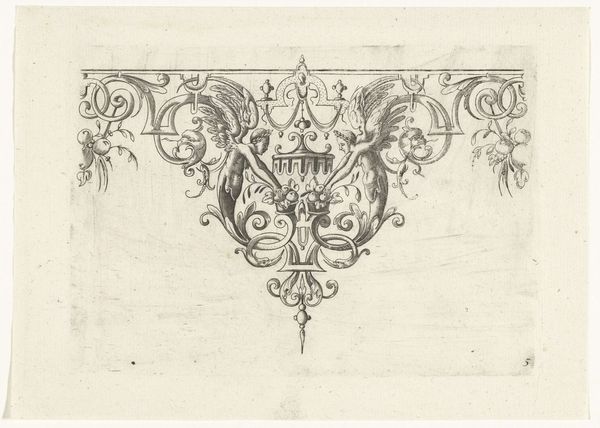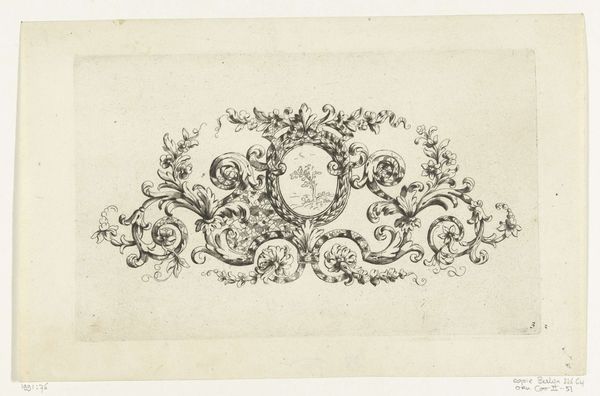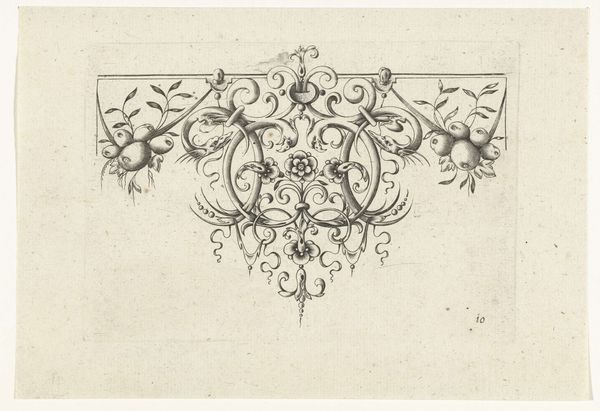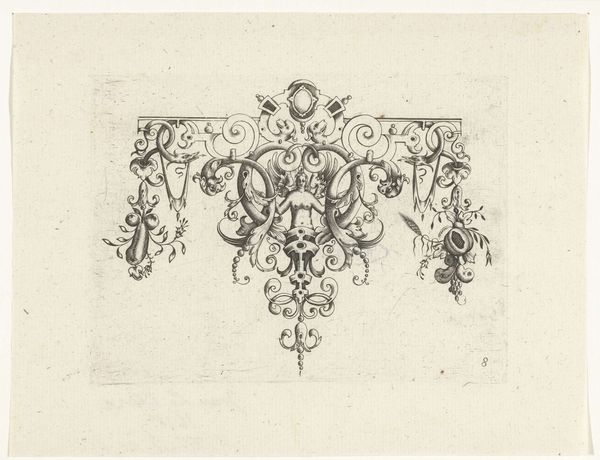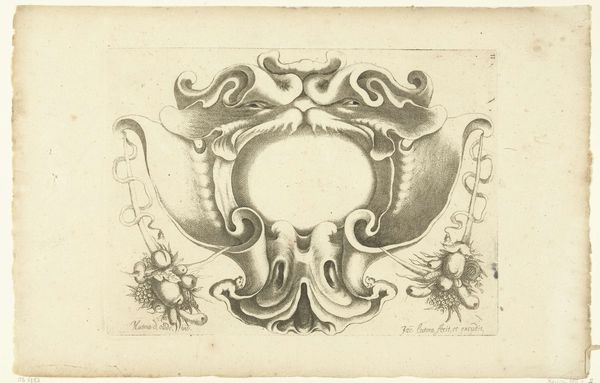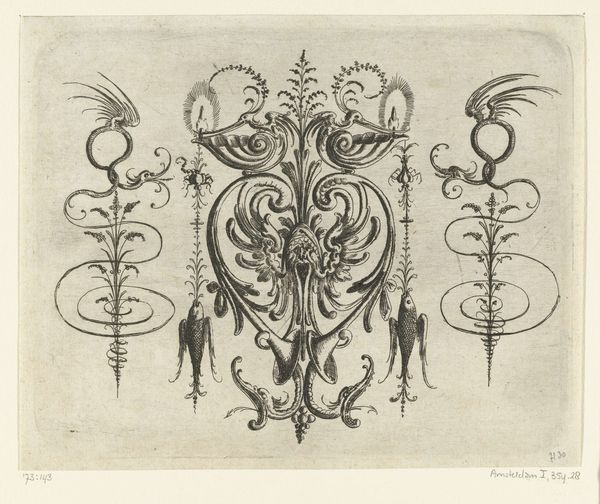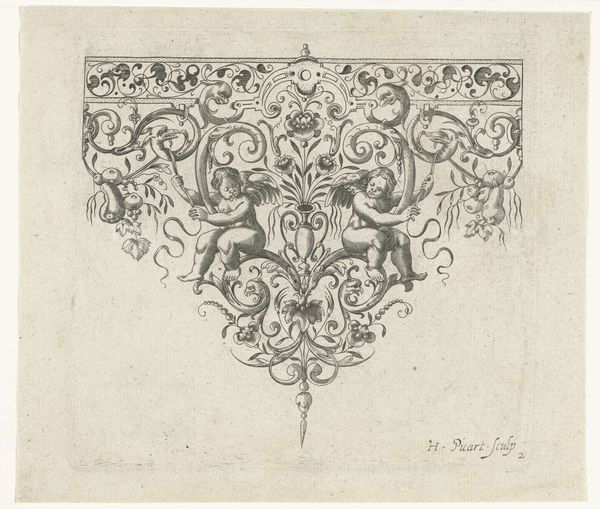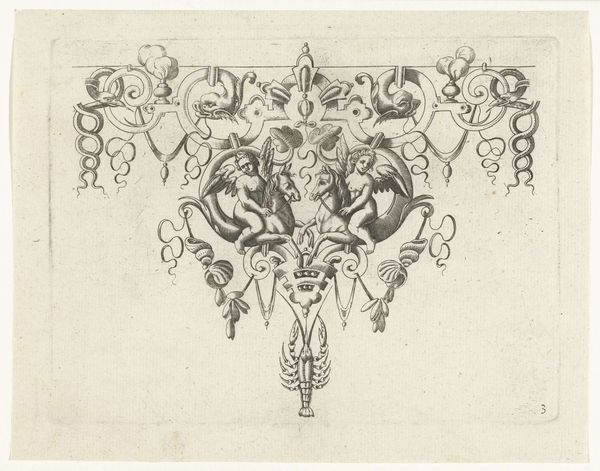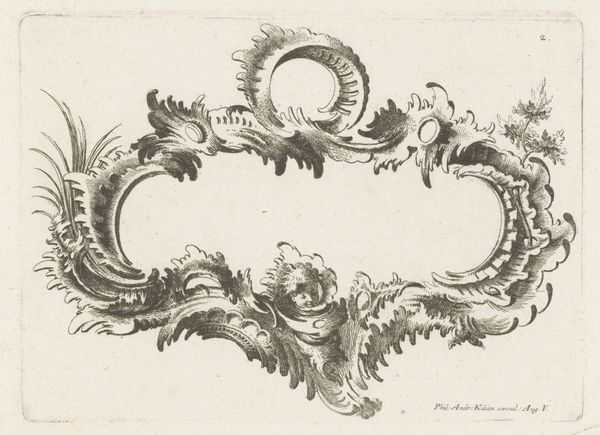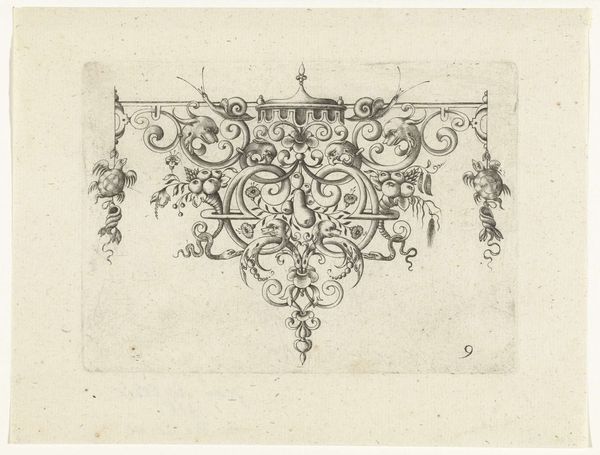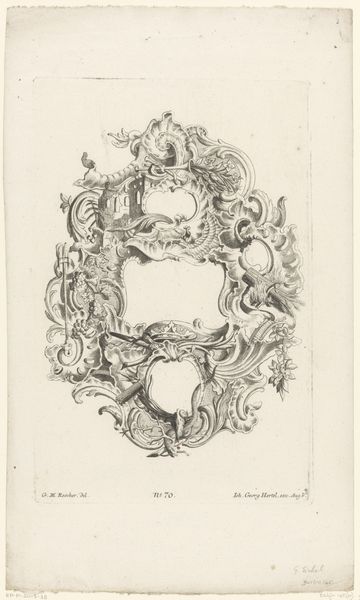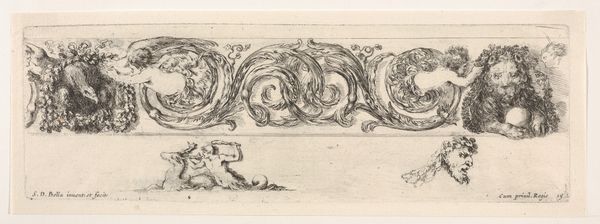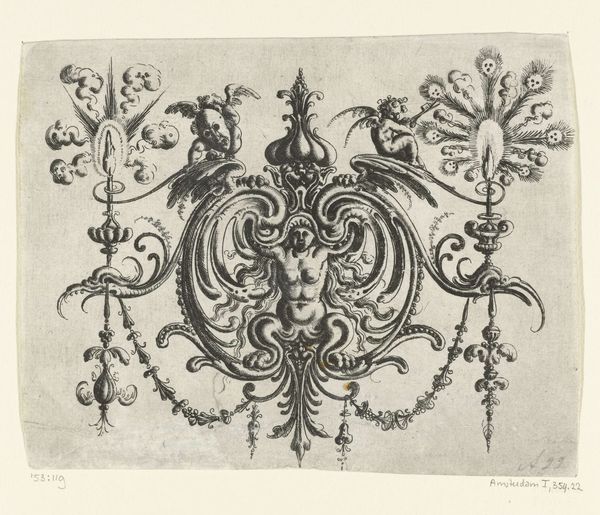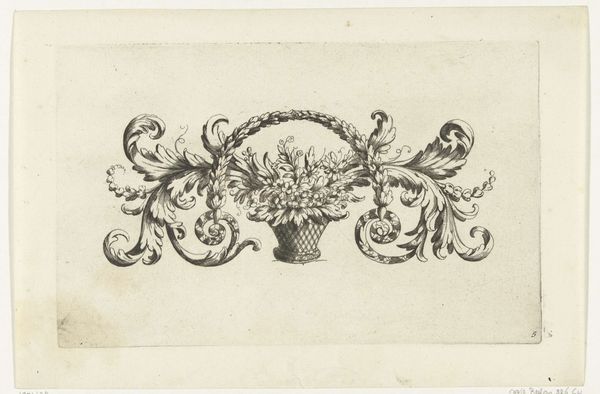
drawing, ink, engraving
#
drawing
#
baroque
#
ink
#
geometric
#
engraving
Dimensions: height 133 mm, width 213 mm
Copyright: Rijks Museum: Open Domain
Curator: Ah, this anonymous drawing from around 1680 to 1690. "Fries met leeg rond medaillon boven cartouche met masker" translates to "Frieze with Empty Round Medallion Above Cartouche with Mask." The work resides here at the Rijksmuseum, and it uses ink and engraving on paper. Editor: Immediately, I'm struck by its sense of ornate austerity. It's so meticulously detailed, yet there's a starkness, an emptiness... particularly that blank medallion, staring back at us. What stories does it long to hold? Curator: That "emptiness," as you call it, becomes a focal point. It challenges notions of visibility and absence, prompting discussions on representation and power dynamics within the era. Whose likeness might have been there? Why was it removed, or never even included? It's an invitation to explore the sociopolitical implications of omissions. Editor: Absolutely. And the grotesque mask! It feels very Green Man meets Roman gargoyle, guarding secrets and spewing pronouncements, all while entangled in these flamboyant baroque flourishes. What's it protecting, I wonder? Or what is it warning us against? Curator: Baroque art often navigates the tensions between beauty and decay, opulence and mortality. This design would likely have been employed as part of interior decoration, signifying elite taste. So that grotesque mask can be interpreted as a reflection of those anxieties and class differences that characterized the period. Editor: Yes, but what do you think about this composition overall? It looks unfinished or like some rough stage in a much larger work... a tantalizing glimpse into a lost master plan. The stark lines, you know, against that untouched paper feel incredibly modern, even raw. Curator: And to add an intersectional lens, the symbolism could be examined regarding gender and the construction of masculinity in 17th-century art. Masks often hide and distort features, thus begging an exploration into performances of masculinity. Editor: Well, from where I’m sitting, it’s simply about duality— the dance between order and chaos, beauty and the beast, the visible and invisible. I find myself oddly empowered by the open invitation of the empty medallion… ready to project my own story upon it. Curator: Indeed, it encapsulates that ongoing, generative conversation between the artwork and the audience, as time passes by.
Comments
No comments
Be the first to comment and join the conversation on the ultimate creative platform.
